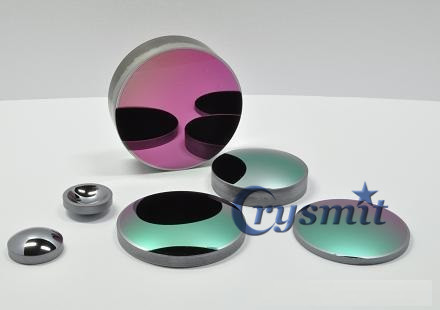| Message: | Silicon is commonly used as a substrate material for infrared reflectors and windows in the 1.5 μ m-8 μ m region. The strong absorption band at 9 μ m makes it unsuitable for CO2 laser transmission applications but it is frequently used for laser mirrors because of its high thermal conductivity and low density. Silicon is also a useful transmitter in 20 μ m range.
Silicon is the most abundant electropositive element in the Earth's crust. It's a metalloid with a marked metallic luster and very brittle. It is usually tetravalent in its compounds, although sometimes they are bivalent and purely electropositive in its chemical behavior. Moreover, pentacoordinated and hexacoordinated silicon compounds are also known.
Silicon lenses are popular for many applications in the IR. They are typically used for imaging applications in the 3-5 μ m region of the spectrum, making them excellent for security and military applications. They can also be used to collimate infrared lasers. These lenses are coated with a BBAR coating that provides 98% transmission in the 3-5 μ m spectral range.
Main Properties Crystal Class
Cubic Lattice Parametera=5.43Å
Melting Point 1417℃
Mohs Hardness 7
Transmission Band 1.5-8um
Density 2.329g/cm3
Young’s Modulus 130.91 GPa @40℃
Thermal Conductivity 1.63W/cm/K
Specific Heat 0.18cal/g/K @25℃
Thermal Expansion 2.6x10-6/℃ @20℃
Crysmit supply Si widows and mirrors with:
Diameter +0/-0.10mm
Length +/-0.2mm
Chamfer 0.20+/-0.10mm @ 45°
Surface Figure (power/irregularity) at 0.63µm 1.0 fringe/0.5 fringe
Parallelism < 40 arc Seconds
Perpendicularity < 5 arc min
Surface Quality 40/20Scratch/Dig |
 my account
my account
 log out
log out
 my account
my account
 log out
log out
